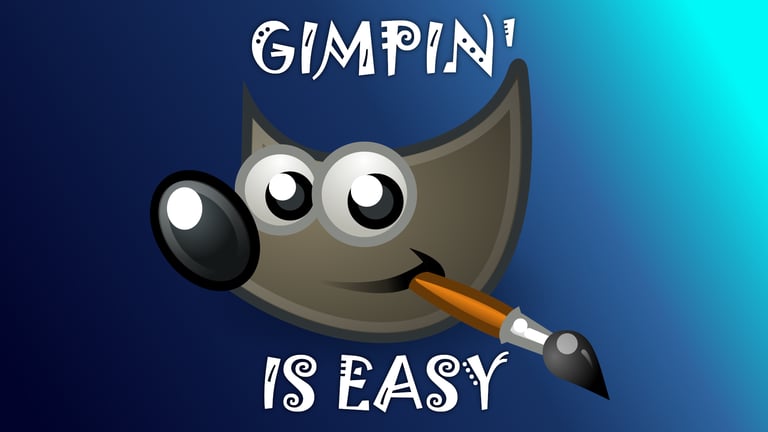How GIMP Turned Me Into the Office 'Designer'
No training, no plan—just curiosity and a lot of undo buttons.
William
5/9/20252 min read


Before I discovered GIMP, my graphic editing skills were about as deep as cropping a photo in Paint Shop Pro 6 on Windows. That was my go-to tool, and cropping was just about the only thing I knew how to do. When I finally stumbled upon GIMP, I was intrigued but also completely lost.
One of my first hurdles was understanding the difference between Save and Export. I remember cropping an image and proudly hitting “Save” only to find the file wouldn't open later. It was a head-scratcher. I didn’t realize that GIMP's native format was XCF and that saving a JPG actually required exporting it. Back then, there was no YouTube, and tutorials weren’t as accessible (or as friendly) as they are today. There was documentation, but to be honest—I was too lazy or maybe just too stubborn to read it. I’ve always been the kind of person who clicks around a program and learns by trial and error. That approach eventually paid off.
For years, I only used GIMP casually—for simple edits like cropping or resizing. But one day, everything changed.
At work, I was asked to remove our old company logo from a PowerPoint slide. I optimistically said “Sure!” while internally thinking, How in the world am I going to do this? After some panicked clicking, I stumbled upon the Clone and Healing tools. Miraculously, they did the job—and did it well. That one request snowballed into many others: editing more images, inserting new logos, creating graphics for meetings, and eventually designing posters. One of my posters even ended up displayed in the company lobby.
That’s when coworkers started coming to me for help with things like wedding invitations and dinner menus. I couldn’t believe it. Me—someone who still can’t draw a stick figure properly—being asked for design help? It felt surreal.
Along the way, I’ve discovered powerful tools like the G'MIC plug-in, which completely opened up a new world of effects and enhancements. As usual, I clicked my way through every setting, dragging sliders from one extreme to another just to see what would happen. That curiosity helped me understand complex tools like layers, opacity, alpha channels, and curves—terms I once would have thought belonged in a photography textbook.
I’m not a graphic designer, and I doubt I ever will be professionally. But when I think about how far I’ve come—from blind cropping in Paint Shop Pro to editing multi-layered images in GIMP—I’m genuinely proud.
GIMP has taught me that creativity isn’t about being able to draw perfectly; it’s about learning, experimenting, and not being afraid to make mistakes. And most importantly—it’s about clicking every button just to see what happens.
